
Thoughts on … Doctor Who: The Web of Fear (1968 and 2021)
[This is the third in an occasional series where I ramble at length and without much focus about an old episode of Doctor Who what I have just watched on my tellybox. Lucky, lucky you. Previously: The Invasion and Dragonfire]
![]()
The BBC have just released the 1968 Patrick Troughton story The Web of Fear on DVD and Blu-Ray, with a new animation of the one episode that remains missing from the archives. The story was quite unexpectedly found in 2013 along with The Enemy of the World, but frustratingly it appears that episode three was stolen at some point between being identified and transferred to the UK.
Somebody – hopefully – still has it somewhere and is keeping it in good condition, but it is not the BBC.
![]()
I’ve mentioned before that I have spent decades trying to avoid finding out stuff about the missing episodes of Doctor Who beyond the basic outlines, on the off-chance they turn up and I can watch them as new, but The Web of Fear is one of the Target novels I absolutely devoured as a child. Indeed I still have a copy of it.
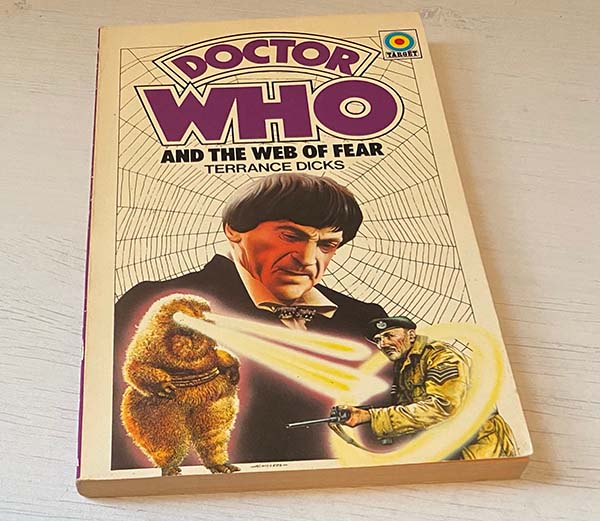
When it was rediscovered in 2013 I thought I’d know it really well. As it turns out, there’s a whole sub-plot about there being a traitor amidst the people under siege from the Yeti in the London Underground, with lots of mis-direction, and I’d completely forgotten who it was in the end, so that worked a treat for me again.
The story is one of Doctor Who’s earlier attempts to do in-universe timey-wimey in the show. It is a direct sequel to 1967’s The Abominable Snowmen, which is still mostly missing, but while time has moved on for the returning character of Professor Travers, who has aged and it seems is suffering from the early stages of dementia, the TARDIS crew are exactly as they were in the story the year before.
The professor’s daughter, Anne Travers, played by Tina Packer, is a great new character, and while obviously Doctor Who is a product of its time, she is one of several prominent women during Troughton’s run who aren’t taking any nonsense from the men around her. There’s a bit where a soldier starts chatting her up saying “What’s a girl like you doing mixed up in a thing like this” and she replies dryly with a smile on her lips “Well, when I was a little girl, I thought I’d like to be a scientist. So I became a scientist.”
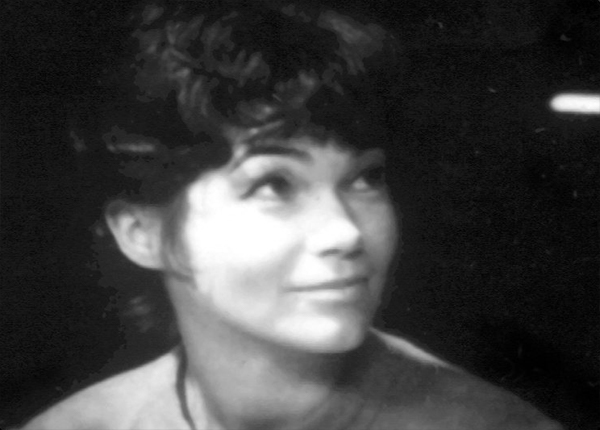
![]()
The story goes that the BBC asked to film bits of this production on location in the London Underground, that London Transport said no, and then when it was broadcast the recreations of the tube stations were so good that London Transport complained to the BBC that they’d somehow got in and filmed anyway.
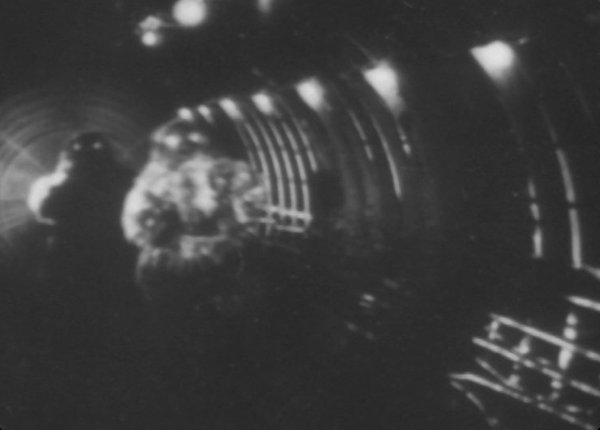
I don’t think anybody is going to be suggesting that the new animated episode was filmed on the London Underground, as to say that fans have been underwhelmed with it would be an understatement.
There’s a lot of comments that the BBC need to give the animators more time and more budget to produce these reconstructions, and that the quality is not as high as it was in the production of animated episodes like those made to fill in the gaps in The Invasion when it was released on DVD some 15 years ago.
My sympathy, to be honest, mostly lies with the BBC and the animators here. How many copies do they sell? How many of us in the UK are buying a second DVD/Blu-Ray issue of a 1968 story in 2021 for one animated episode and some extra documentary content? 3,000 of us? 5,000? 10,000? I’ve no idea, but I can’t imagine worldwide sales are in anything other than the low five figures. So the animations seem to me like quite a big up-front cost with quite a low ROI on them. They are very welcome, but they surely can’t be a massive money-spinner.
Having said that … this is definitely not one of the better ones.
In particular, actor Jack Watling was tall for sure, but at times Professor Travers appears to be about 1,057 times bigger than any of the other humans in the story, and to get more of a 3D effect there’s a lighting algorithm that keeps “shining” on the characters’ hair while they move around but it just makes it look “not coloured in” to me and it drove me nuts.
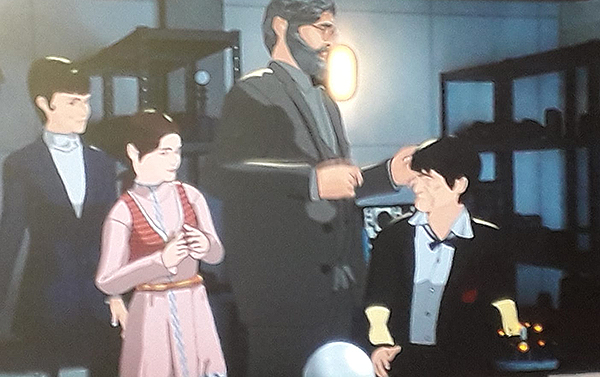
It’s a real shame, because if you watch the extra on the second disc about the making of the animation it is clear that 1) they think they’ve done a good job within the constraints and that 2) more importantly, they see this method they’ve developed as bringing down the costs and potentially enabling them to re-make some of the stories that have been consistently described as involving too many characters, too many locations or just too much tartan to be successfully animated – they teased us with stills of Marco Polo, The Daleks’ Master Plan and The Highlanders. Christ knows how BBC Studios will ever make the business case to animate The Smugglers or The Space Pirates, missing stories with no big ticket monsters and poor reputations, but we shall see.
On the whole though I still enjoyed a bit of a sub-par animation rather than no animation at all, but I suspect we are destined for another five years of fans with no grasp of economics complaining that they aren’t getting Pixar-level animations.
There’s also still the question of whether animating full-length stories scene-by-scene is the right way to go in the future anyway. As I said when I reviewed the animation of The Faceless Ones for the Guardian.
“The animation team must have considered that they could have assembled a much more watchable 60-minute telemovie version of the tale with judicious cutting of the surviving audio recording. But, clearly, the people most likely to want to purchase an animated recreation of a 1960s Doctor Who story are also the people most likely to want a recreation of every single second of a 1960s Doctor Who story. Even the dull bits.”
![]()
One thing fun about the animations has been the inclusion of little modern Easter Eggs in them, for example the animation of The Faceless Ones had in the background wanted posters for different incarnations of the Master, or electrical goods branded Magpie Electricals, which has become a props in-joke in the modern show harking back to the 2006 episode The Idiot’s Lantern.
This release has at least one. Much to Jamie’s exasperation, driver Evans insists on getting a chocolate bar from a vending machine at one tube station along the way, but it isn’t a Cadbury’s chocolate bar, it is a Camfield chocolate bar, a reference to Douglas Camfield who directed the story in 1968.
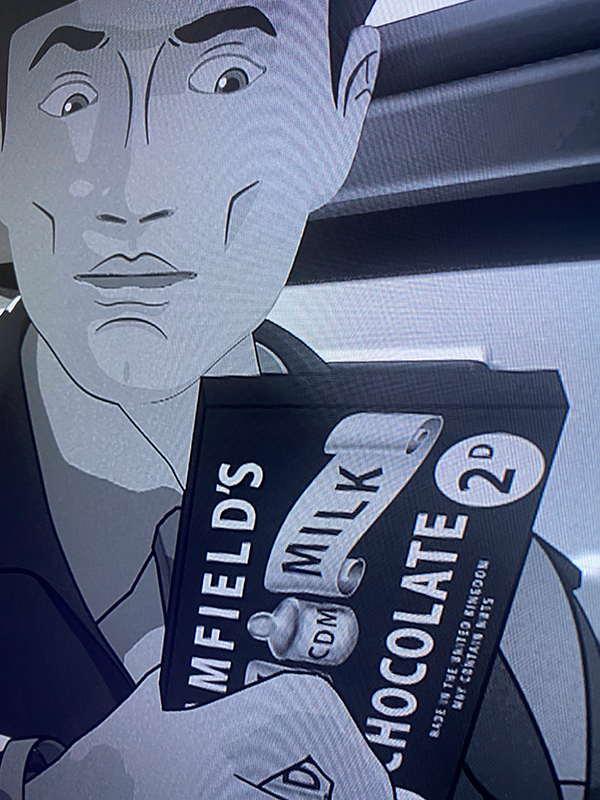
I was also entertained by the inclusion of the phrase “may contain nuts” on the packaging, which would seriously pre-date the 2014 legislation that made that kind of labelling mandatory.
![]()
I was interested in the background posters in that scene too. It seems like the one of the woman behind them on the platform at Monument is just a straight lift of the one that appears behind Victoria and Prof Travers at Piccadilly Circus in episode five.
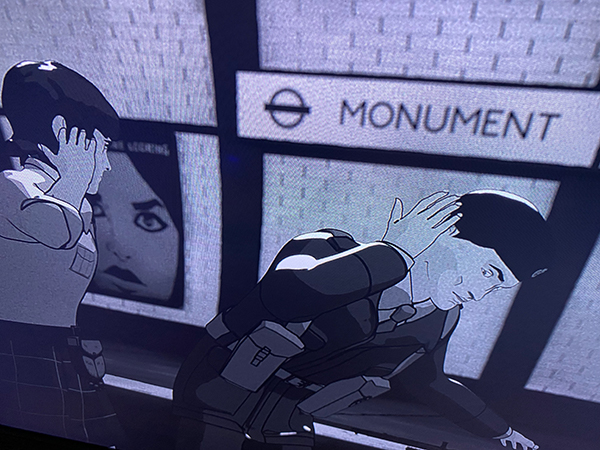
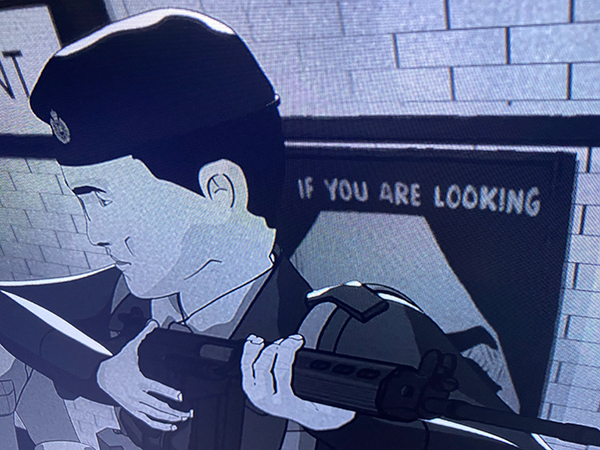
The “If You Are Looking” poster in the animation
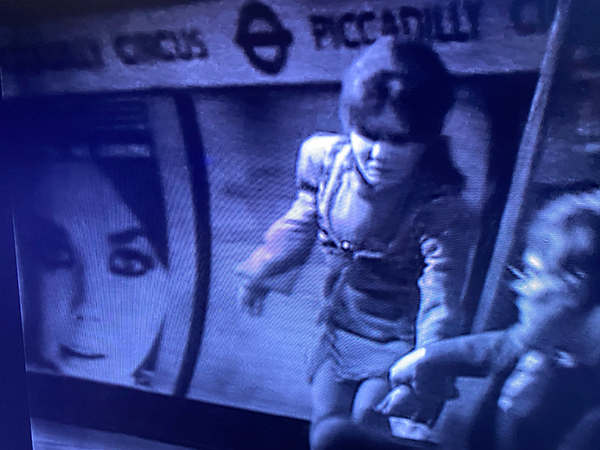
The same poster appears in episode five of the original 1968 version
I’m unclear what this is, though…
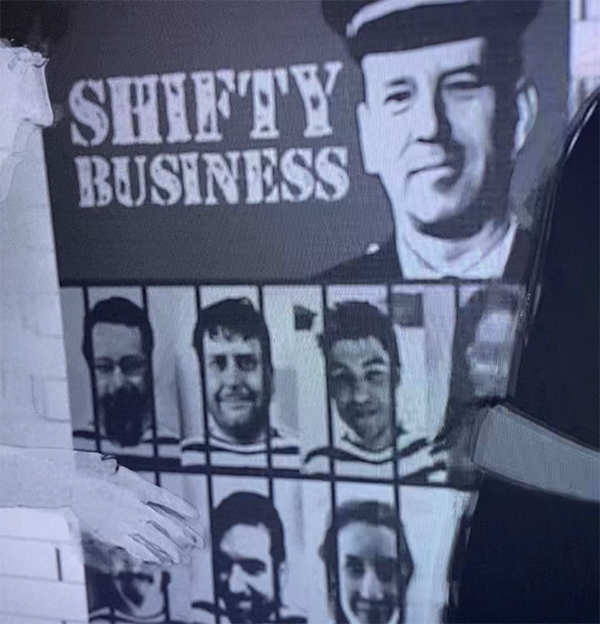
The “Shifty Business” poster appears in the animated episode three
And there’s an interesting poster mystery in one of the existing episodes too. The poster for the film “Block-Busters” is, it seems, quite clearly a reworked poster for the genuine Sidney Poitier and Rod Steiger movie In the Heat of the Night. Quite how it ended up being used in the show but with a different title on it remains unclear.
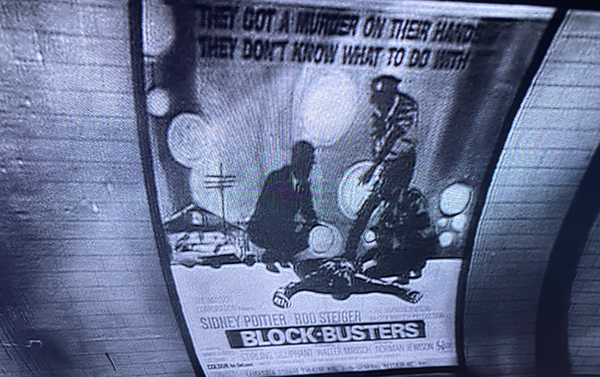
![]()
Another part of the Blu-Ray package is an animated version of the BBC trailer used to promote the Web of Fear. It’s definitely worth noting exactly what Patrick Troughton says in this direct-to-camera address to the audience and storing it for use next time some neckbeard is arguing that Doctor Who was not a children’s show and should be a gritty and difficult drama.
“There’s something I want to tell you. When we start out on our next adventure, Jamie and Victoria and I, we meet some old friends. We also meet some old enemies. Very old enemies. The Yeti as a matter of fact. And this time, they’re just a bit more frightening than last time. So I want to warn you that if your mummy and daddy are scared, you just get them to hold your hand. *Yeti roars off-camera* Here we go again. I shall have to go. See you soon. I hope.”
It’s entirely possible to read that transcript in Tom Baker or Colin Baker or David Tennant or Jodie Whittaker’s voice in your head, but I guess if she delivered a breathless direct address to children like that we’d get screeds of invective about it from the #NotMyDoctor crowd on social media.
![]()
Also one bit of the extras where you may find that something gets in your eye. Professor Travers in the story is played by Jack Watling, who was the real life father to Deborah Watling who played companion Victoria. There’s a bit in the “making of” doco where Frazer Hines who played Jamie talks about going to see the rediscovered episodes screened at the BFI with Deborah when she was still alive in 2013, and her just saying “It’s been so long since I saw dad”.
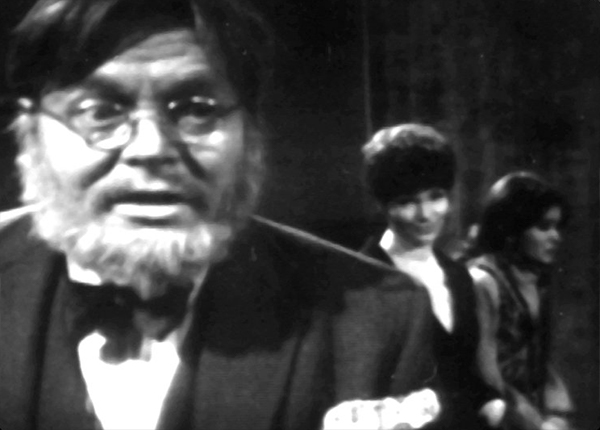
(L-R) Jack Watling as Professor Travers, Tina Packer as his on-screen daughter Anne Travers, and his real-life daughter Deborah Watling playing Victoria.
![]()
I’ve written previously about one thing I find quite problematic with this story – albeit as a minor set-up interlude in episode one. I’ve described the opening scenes where Professor Travers is trying to get the deactivated Yeti robot back from collector Julius Silverstein as “an absolute pile-up of anti-semitic tropes from the name down”. Doctor Who might have dealt better with race and gender than many contemporary shows from the 1960s, but that doesn’t mean we shouldn’t note when it fell short. And I still think it did there.
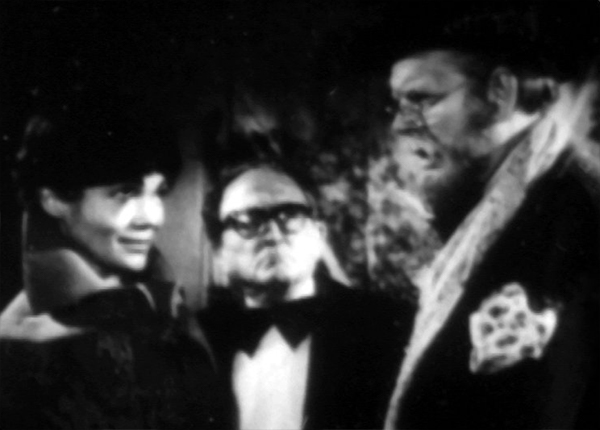
![]()
Talking of incidental characters, Harold Chorley is one of the least likeable incidental characters in the whole of 1960s Doctor Who and he’s a journalist. I continue to try and not take this personally. This must be what it was like to be someone who worked in the tax office when The Sun Makers was on in 1977.
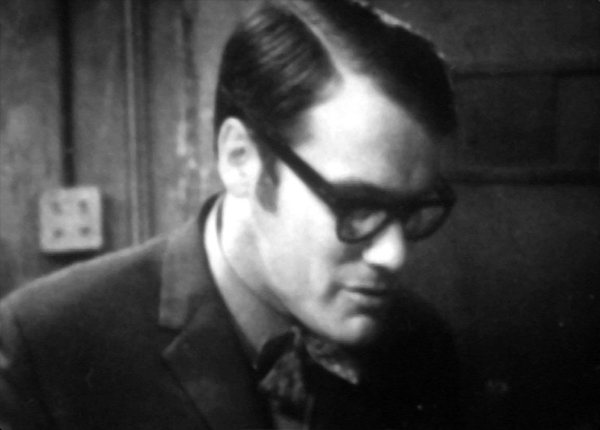
![]()
I think the only possible complaint with the Web of Fear as a story is that after five-and-a-half episodes full of tension and fear, the ending is then a bit abrupt and off-key. It’s quite touching the way that the Doctor says to Jamie that he’ll have to be looked after until he grows up if the Great Intelligence can extract all of the Time Lord’s knowledge and reduce him to the mental state of being a newborn baby. A fate that we pretty much saw happen to Celia Imrie’s Miss Kizlet in 2013 episode The Bells of Saint John during the Matt Smith era.
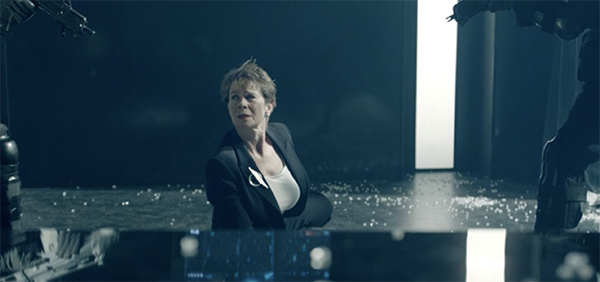
But then at the end of The Web of Fear the Doctor does act like a petulant child anyway, when his plans are disturbed by Jamie and everyone else trying to save him. It is most un-Doctor-like.
![]()
The inclusion of the animated episode reminded me of one of the most amazing bits of when Doctor Who was on Twitch. The Web of Fear was part of the run, and the only story listed to be shown that we knew had a missing episode. As it approached episode three, speculation mounted that this was how they were going to premiere that they had in fact recovered that missing third episode.
The opening credits rolled.
OH MY GOD YES MOVING PICTURES! JAMIE AND EVANS CONFRONTING THE PULSATING MIST IN THE TUNNELS! IT IS THE MISSING EPISODE!
Oh no, it is just we’d all collectively forgotten that the telesnap reconstruction starts with a surviving bit of the cliffhanger from the episode before edited into it before it becomes a PowerPoint presentation of what the episode was like. Dagnabbit!
![]()
I wish to place it on record that we are forever in debt to episode hunter Philip Morris for tracking these missing episodes down, but unfortunately nobody has heard anything from him since 2017 when they announced Jodie Whittaker was to be the new Doctor.
![]()
They never show the Yeti on your loo in Tooting Bec, but the story does have a fantastic Wyndham-esque cosy catastrophe about it. Aside from some aerial shots in a slide presentation we don’t get to see London under the mist and the titular Web of Fear, but the constant echo-y treks through the tunnels do make it feel really claustrophobic.
My feelings on the whole with this story are that when The Enemy of the World was re-discovered at the same time, that story was soooooo much better than the audio and its reputation had implied it would be, that it somewhat overshadowed The Web of Fear being exactly as good as people remembered. It is top notch Troughton-era Doctor Who from start to finish.
![]()